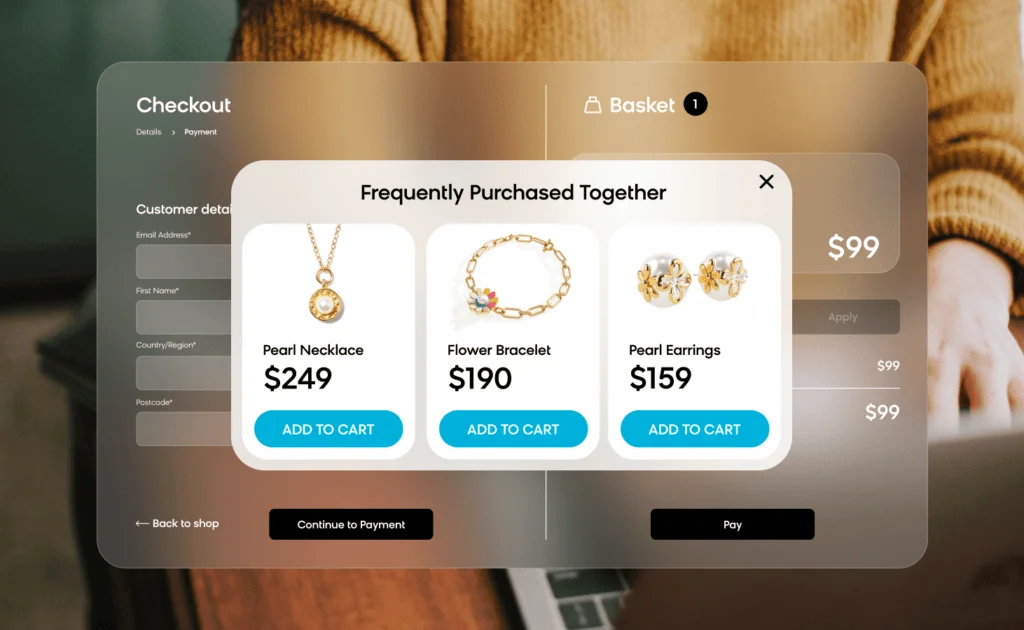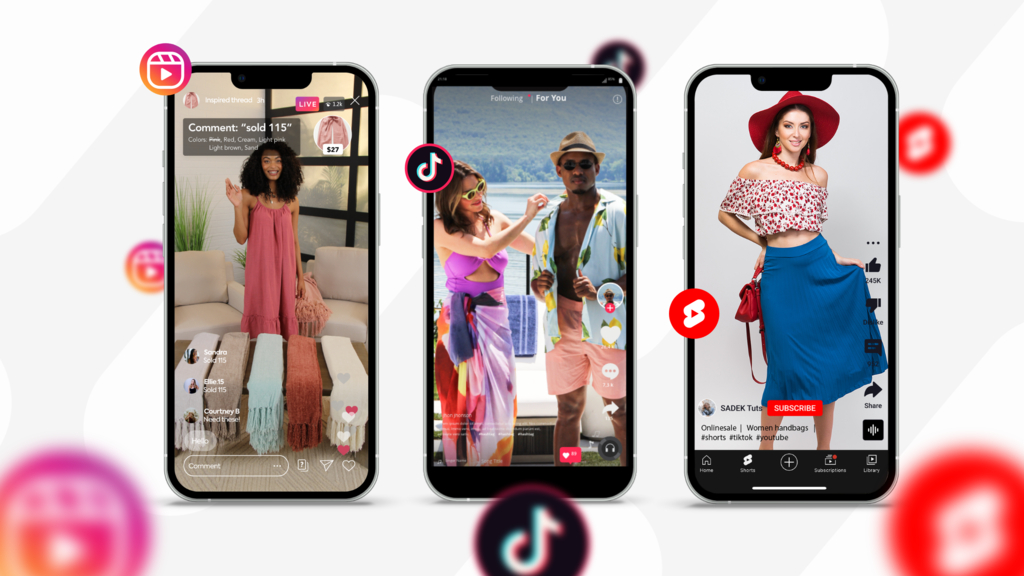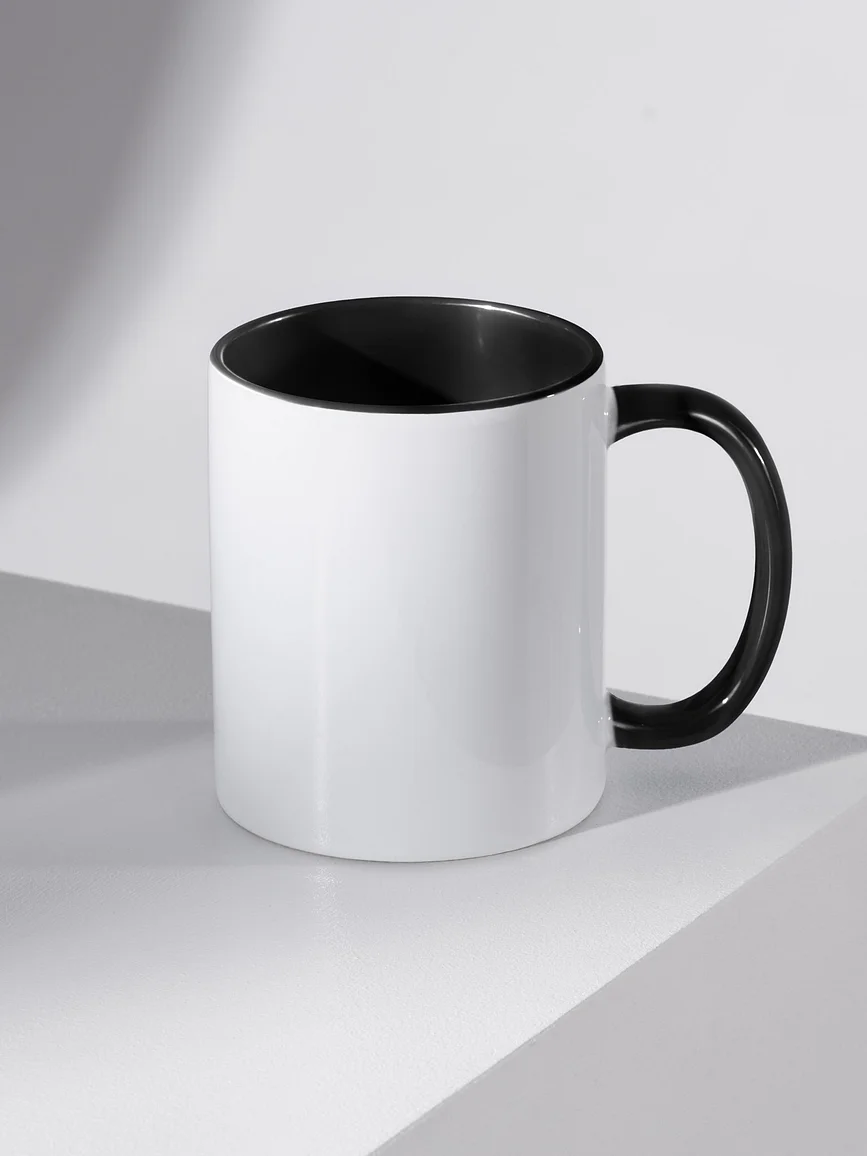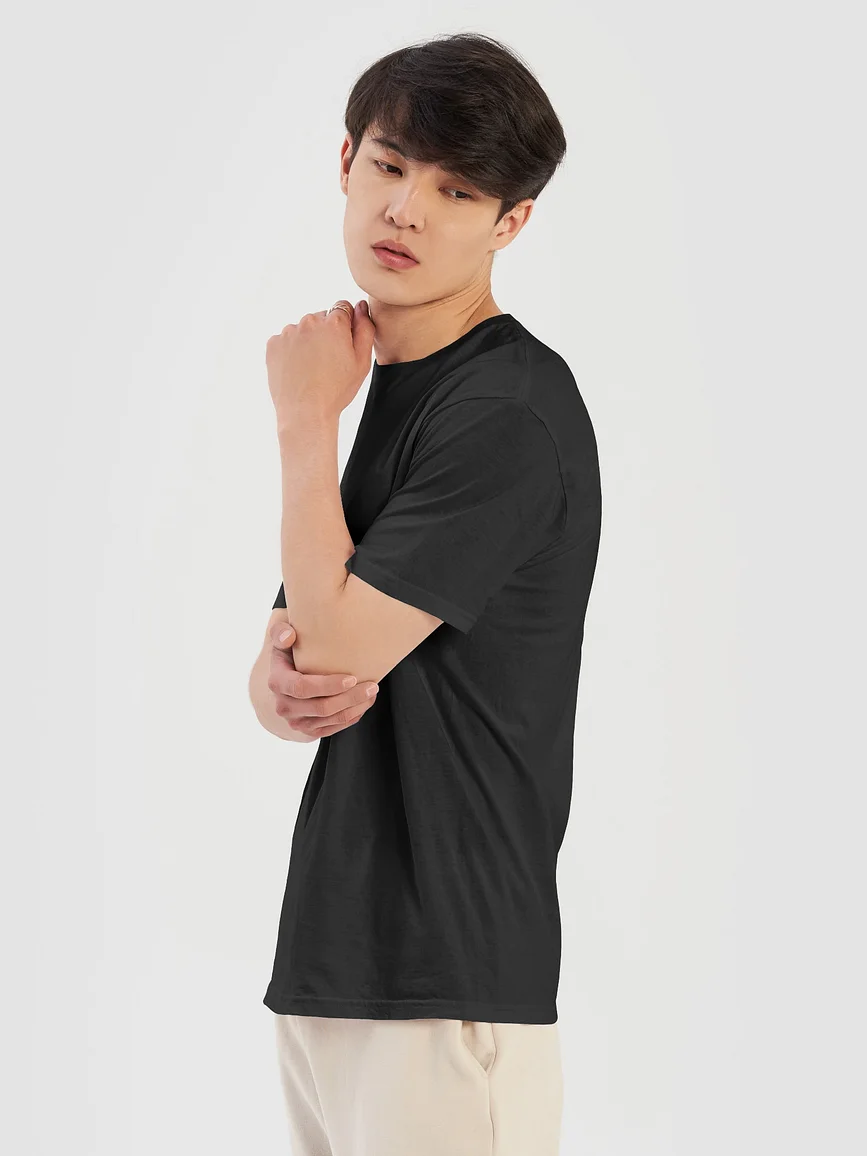15 Print-on-Demand Marketing Trends to Boost Sales in 2026

Print-on-demand (POD) sellers face a rapidly evolving landscape in the coming year.
With digital tools advancing, customer expectations rising, and competition tightening, it takes more than cool designs to stay profitable.
This year, success will go to creators who embrace cutting-edge marketing strategies that blend tech, personalization, and authenticity.
Here's a breakdown of the top 15 POD marketing trends you need to use in 2026 to drive traffic, build loyalty, and increase revenue, and how platforms like Fourthwall can help bring them to life.
Why Having a Solid Marketing Strategy Matters
Print-on-demand has become more accessible than ever. But that accessibility comes with saturation.
There are now over 2 million active POD stores worldwide, and consumers are overwhelmed with choices. A compelling design alone isn’t enough to cut through the noise.
Strategic marketing is the differentiator. Brands that actively market themselves are 7x more likely to see year-over-year revenue growth, according to a 2025 Shopify seller report. Smart marketing enhances brand visibility, drives both organic and paid traffic, and boosts conversion rates across various platforms.
With AI reshaping customer behavior, shoppers now expect hyper-personalized experiences, fast discovery, and authentic storytelling.
In fact, a 2025 McKinsey study found that veals that 71% of consumers expect businesses to deliver personalized interactions, while 76% express frustration when companies fail to meet these expectations.
Moreover, new commerce formats, such as shoppable video, voice-based shopping, and augmented reality, are transforming the way products are discovered and purchased.
Sellers who ignore these shifts risk falling behind while competitors capture emerging demand.
15 Print-on-Demand Marketing Strategies
1. Ultra-Personalized Storytelling & Dynamic Narratives

Consumers crave connection. They want to see who you are, why you create, and how your products reflect shared values or stories.
Brands that are winning in the POD space are those that treat each customer like a character in their story, not just a transaction.
Modern tools now let creators personalize storefronts, product pages, and even email campaigns based on individual behavior.
By analyzing purchase history, browsing patterns, and even social sentiment, sellers can craft dynamic narratives that shift depending on who’s watching.
Think Spotify Wrapped, but for merch.
2. AI-Driven Design, Trend Forecasting & Micro-Drops
Staying ahead of what’s hot is the difference between building a profitable online store and getting lost in the noise.
Thanks to AI, creators can now forecast trends in real time, scanning platforms like TikTok, Google Trends, and Instagram to catch viral waves before they crest. For POD sellers, this means faster design cycles, more relevant collections, and smarter use of resources.
This approach powers the rise of micro-drops: short bursts of top trending products (usually 3-5 SKUs) that tap into niche communities, memes, seasonal shifts, or cultural moments.
Whether you sell hoodies, shirts, drinkware, or home decor, AI tools can guide you toward the right concepts at the right time.
The result? Fresh, exciting product launches that generate buzz and boost your profit margins without bloating inventory.
3. Web-to-Print + Real-Time Product Customizers

Today, more shoppers want to be able to tweak products with their name, color preferences, or even unique art placement.
This level of personalization builds emotional investment, making custom products more memorable, shareable, and ultimately, more profitable.
The rise of web-to-print platforms and real-time customizers has transformed how POD sellers operate.
Instead of designing dozens of one-size-fits-all SKUs, creators can now offer customized products with dynamic previews, letting fans visualize their personalized items before they click "buy."
Whether you're targeting a broad demand market or diving into a niche, customization increases perceived value and reduces returns.
4. Sustainability & Regenerative Branding
If your POD brand isn’t talking about sustainability, you’re probably not even in the conversation.
That’s because Gen Z and Millennial consumers are becoming pretty savvy. They’re checking tags, researching materials, and scanning your social for signs of impact.
However, regenerative branding takes it a step further.
This approach involves creating eco-friendly products and actively giving back, whether that’s through carbon offsets, ethical sourcing, biodegradable packaging, or charitable donations tied to each sale.
What makes this strategy powerful in the print-on-demand space is its alignment with intentional purchasing.
Buyers are no longer impulse shopping just for style; they want products that reflect their values. And they’re willing to support creators who take action, not just talk.
5. Pretail / Preorders & Scarcity Drops

What if you could sell products before you even make them? That’s the power of pretail.
Instead of guessing what your audience wants and hoping it sells, pretail flips the model: you launch an idea, gauge demand, and only produce what people commit to buying.
It’s smarter, more sustainable, and it reduces wasted inventory and upfront costs.
With print-on-demand, this approach is a game-changer.
You can float a new hoodie design, test interest in a custom drinkware line, or tease a themed drop of shirts or home decor items, all before committing to full production.
Pair that with scarcity drops (limited-time or limited-quantity offers), and now you’re creating urgency that drives faster decisions and stronger engagement.
6. Shoppable Content
If you're not selling directly through social media, you're missing out on your biggest storefront.
Thanks to shoppable content tools like TikTok Shop, YouTube Merch Shelf, and Meta Shopping, you can now showcase your products directly under your videos, giving your customers easy access to products already promoted in your content.
For example, you've just uploaded a slick promotional video of your latest apparel collection to YouTube. Well, with YouTube Merch Shelf, you can promote those same items beneath your promo video, so customers can buy them instantly without ever leaving your channel.
It’s a smart way to capitalize on your fans' excitement over your products while providing them with the convenience of direct purchase.
7. Micro-Influencers, Nano-Creators & Co-Creator Drops
Big budgets and celebrity endorsements are no longer the key to success when selling merchandise.
Micro-influencers (creators with 10k–100k followers) and nano-creators (under 10k) often outperform larger influencers because they have hyper-engaged communities that actually listen.
These audiences trust them, interact with them, and, most importantly, buy from them.
For POD sellers, partnering with small creators in specific niches, such as anime fans, cottagecore enthusiasts, or eco-conscious shoppers, can lead to higher conversion rates with lower ad spend.
And when you invite them into the process as collaborators, not just promoters, it unlocks even more potential.
Co-creator drops help turn the product into a shared vision. The creator helps design the merch, promotes it as their own, and gives their community a reason to rally behind it.
This collaboration feels personal, exclusive, and authentic, because it is.
Instead of pushing products, you're telling a story with someone the audience already knows and trusts. The result? Higher engagement, faster sellouts, and long-term brand loyalty for both parties.
8. Modular / Mix-and-Match Product Lines
Customers want options, and not just in size or color.
They want to curate their own look, bundle their favorite items, and express their style across multiple products.
That’s where modular collections come in: flexible, mix-and-match product lines that let your audience build sets that reflect their vibe, not yours.
Whether it’s pairing a hoodie with a matching tumbler, combining a shirt with a complementary hat, or offering interchangeable colorways across sweatshirts, leggings, and home decor, modular designs create a personalized experience with minimal complexity on your end.
You’re giving your target audience the tools to create their own statement, and that drives both higher engagement and more sales.
9. Dynamic Bundling & AI-Optimized Offers

Smart selling means selling smarter, not harder. Enter dynamic bundling: the practice of using AI to automatically group products based on customer behavior, preferences, and purchase history.
Instead of offering static bundles, you create personalized offers that feel tailor-made, increasing both relevance and revenue.
For example, if a customer buys a shirt, the system might suggest a matching hoodie, tumbler, or sticker based on what similar buyers chose.
Alternatively, if someone browses eco-friendly apparel, they could be presented with a bundle that includes a custom home decor piece and a reusable drinkware item featuring a shared design theme.
These subtle cues guide shoppers toward a bigger cart without any pushy upselling.
10. Immersive AR/VR Try-On & Digital Twins
AR (Augmented Reality) and VR (Virtual Reality) try-ons are transforming the way people shop for print-on-demand products, especially apparel, home decor, and drinkware.
With these tools, fans can preview how a hoodie fits their body, how a canvas print looks on their wall, or how a custom tumbler matches their desk aesthetic, all before hitting "buy."
This isn’t just fun tech; it solves a key problem in online shopping: uncertainty.
By allowing shoppers to visualize products in their actual environment or on their digital twin (a virtual representation of themselves), you reduce hesitation and returns while building confidence in every purchase.
11. Data Ethics, Transparency & Community Trust

With rising concerns around data privacy, surveillance, and AI, consumers have become far more conscious about how their information is collected, used, and protected.
Simply put: if your brand isn't transparent, people won’t trust you.
Modern buyers, particularly Gen Z and Millennials, expect clear, honest policies on cookies, tracking, and personalization.
They want to know why you’re asking for their email, how their data helps improve their shopping experience, and what you're doing to keep it secure.
Transparency isn’t just ethical—it’s strategic. Brands that are upfront build deeper relationships, while those that dodge the issue lose credibility fast.
12. Localization & Cultural Relevance
In a global market, one-size-fits-all marketing strategies are no longer effective.
Localization—the practice of tailoring your messaging, products, and promotions to specific regions and cultures—can dramatically increase conversions and customer loyalty.
From language and currency to local holidays, memes, and design aesthetics, making your brand feel local can give you a competitive edge in any niche or demand-driven market.
For example, a Valentine’s Day drop in the U.S. might not resonate the same way in Japan, where White Day or other cultural events take center stage.
It’s important to remember that a color or phrase that works in one country might be offensive or irrelevant in another.
The brands that take the time to understand cultural nuance and reflect it in their apparel, drinkware, or home decor are the ones that stand out.
13. Voice Commerce & Conversational Buying

Voice technology isn’t the future of eCommerce; it’s already here.
From smart speakers like Alexa and Google Home to AI-powered chatbots on websites and messaging apps, customers are increasingly discovering and buying products without ever touching a screen.
Voice commerce and conversational buying make shopping hands-free, frictionless, and fast.
For print-on-demand sellers, this opens up exciting new opportunities.
Imagine a customer saying, "Alexa, reorder that hoodie I loved last winter," or chatting with a brand chatbot that guides them to the perfect personalized drinkware gift based on a few quick questions.
These interactions not only simplify the buying process but also create a sense of convenience and connection that traditional browsing can't match.
14. After-Purchase Engagement + Product Upgrades
After-purchase engagement is about transforming a one-time buyer into a loyal fan, and that happens when you show up in unexpected, thoughtful ways.
From surprise upgrades to post-purchase perks, these little moments create lasting impressions.
Instead of viewing fulfillment as the final step, treat it as the first step in building brand loyalty. Add a handwritten thank-you note, a bonus sticker, or a secret discount code for their next order.
Invite customers to share their unboxing experience on social with a branded hashtag or photo prompt. Then follow up with personalized product recommendations, early access to new drops, or "insider" rewards based on their interests.
15. Cross-Media Launches & Hybrid Physical + Digital Experiences

A product drop is great, but a campaign that connects across every screen your audience touches—now that’s powerful.
Cross-media launches are about more than promoting your latest hoodie or home decor collection.
They’re about telling a unified story across multiple platforms, like social media, email, YouTube, and even live events, so your brand feels consistent, recognizable, and hard to ignore.
The goal isn’t just to sell a product; it’s to build a cohesive experience that stays with people whether they’re scrolling, watching, or shopping.
Imagine launching a new apparel line where the teaser starts on TikTok, the full reveal happens in a livestream, and behind-the-scenes content is sent to your email list.
Each channel plays a role, but together, they deliver one powerful brand narrative.
How to Use Fourthwall to Power These Marketing Strategies

With tools built for modern brands, Fourthwall makes it easy to implement high-converting marketing strategies without needing a marketing team or a complicated tech stack.
Here’s how you can turn some of the biggest 2026 print-on-demand trends into action using Fourthwall’s built-in features and integrations:
Shoppable Content & Social Commerce – Activated by Integrations
With Fourthwall’s integrations for TikTok Shop, YouTube Shopping, Instagram, and Facebook, you can sell directly where your fans spend their time. Showcase your products in videos, livestreams, or directly on your social profiles.
💡 Use the TikTok Feed or Instagram Feed blocks to highlight your social content directly on your shop homepage and drive ongoing engagement.
Pretail / Preorders & Scarcity Drops – Launch Hype, Not Inventory
Build buzz before your product even exists. Use Fourthwall’s preorder and limited drop tools to create FOMO, validate demand, and reduce waste. You can even pair this with Laylo to announce exclusive launches and drops directly to your supporters.
💡 Combine Laylo + Fourthwall to tease limited-edition hoodie drops and collect emails before launch day.
After-Purchase Engagement + Product Upgrades – Automate Loyalty
Don’t stop at the sale. Use Fourthwall’s email integrations (like Klaviyo, Mailchimp, or beehiiv) to send personalized follow-ups, thank-you messages, and upgrade offers. You can also use Zapier to trigger automations, such as sending bonus content or drop reminders after a purchase.
💡 Ask fans to post unboxing photos and reward them with promo codes or early access to new merch.
Cross-Media Launches & Hybrid Experiences – Build an Ecosystem
With Fourthwall’s digital product support, you can sell files, videos, music, and bonus content alongside your physical merch. Whether you’re dropping a T-shirt that unlocks a video series or a mug tied to a Spotify playlist, you can bundle both worlds together.
💡 Upload downloadable wallpapers, PDFs, or bonus audio files that get delivered automatically with your physical product.
Co-Creator Drops & Micro-Influencer Collabs – Partner and Grow
Fourthwall Pro allows for multi-creator storefronts and flexible profit splitting, making it easy to partner with nano- and micro-influencers on co-branded merchandise. Tap into new communities and make your fans feel part of something exclusive.
💡 Run a limited collab with a niche creator and sell through a shared store—perfect for cross-promotion.
Personalized Email Campaigns – Nurture with Relevance
With Fourthwall’s integrations with Mailchimp, Klaviyo, and beehiiv, you can segment your audience and send emails tailored to their behavior, like follow-ups after a specific purchase or personalized bundles based on interests.
💡 Use tags like “first-time buyer” or “sweatshirt purchaser” to trigger custom messages or bundle suggestions.
Dynamic Bundling & Promo Offers – Boost Cart Value
Increase average order value with promo codes, bundle offers, and product recommendations based on what’s already in the cart. Run “Buy 2, Get 1 Free” or time-limited bundle discounts for fast-moving seasonal drops.
💡 Pair a trending shirt with a matching drinkware item and create a bundle discount that shows up at checkout.
Voice & Conversational Commerce – Build for the Future
While Fourthwall doesn’t support direct voice ordering (yet), you can still optimize your product titles and descriptions for natural language search, especially on Google, TikTok, or YouTube, where voice search is booming.
💡 Name your products using simple, voice-friendly phrases like “custom pastel aesthetic hoodie” or “funny cat dad mug.”
Final Thoughts: Build Smarter, Sell Better, Grow Faster

The difference between stores that grow and those that stall isn’t just about better products; it’s about smarter strategies.
From AI-generated micro-drops and shoppable social content to voice-enabled purchases and cross-media experiences, today’s top-performing POD brands aren’t just keeping up with trends—they’re setting them.
However, none of these strategies is effective without the right tools. Luckily, that’s where Fourthwall comes in.
Whether you’re just starting out or scaling your brand, Fourthwall gives you everything you need to launch, promote, and grow your POD business all from one powerful platform.
With built-in support for sales, personalized email marketing, live selling integrations, creator collaborations, and more, Fourthwall can make any marketing campaign feel simple.
If you're ready to implement the future of eCommerce into your print-on-demand business, then join Fourthwall today!
FAQ: POD Marketing Trends
What are the top marketing trends for print-on-demand?
The print-on-demand market in 2026 is driven by personalization, AI-powered trend forecasting, and social-first selling strategies.
Top POD sellers are using tools like shoppable content, micro-drops, and AR try-ons to turn engagement into sales.
These trends help creators stand out in a crowded market by offering custom, meaningful experiences through their apparel.
What is pretail and how does it work in print-on-demand?
Pretail means selling products before production begins, allowing POD sellers to test interest, reduce wasted inventory, and create hype with limited-time offers.
This strategy is especially powerful for niche drops, such as eco-friendly apparel or custom sweatshirts, helping creators gauge demand and ensure every sale is profitable.
By combining pretail with scarcity marketing, brands can boost conversions and increase profit margins while keeping production efficient.
Why does data transparency matter in POD marketing?
Modern POD customers, especially Gen Z and Millennials, value honesty about how brands collect and use their information.
Being open about your data practices builds trust, strengthens your brand reputation, and keeps your target audience loyal.
For print-on-demand sellers, transparency isn’t just ethical; it’s a competitive advantage in a demand-driven market where credibility influences sales as much as design quality.
What are the benefits of using AI in POD design and marketing?
AI helps print-on-demand sellers stay ahead by analyzing Google Trends, identifying top-trending designs, and helping creators create designs faster.
It can also optimize pricing, predict demand, and build personalized product bundles that increase profit margins.
Whether you’re selling hoodies, leggings, or customized products, AI ensures your online store keeps up with what customers actually want, thus making your POD business smarter and more profitable.
















